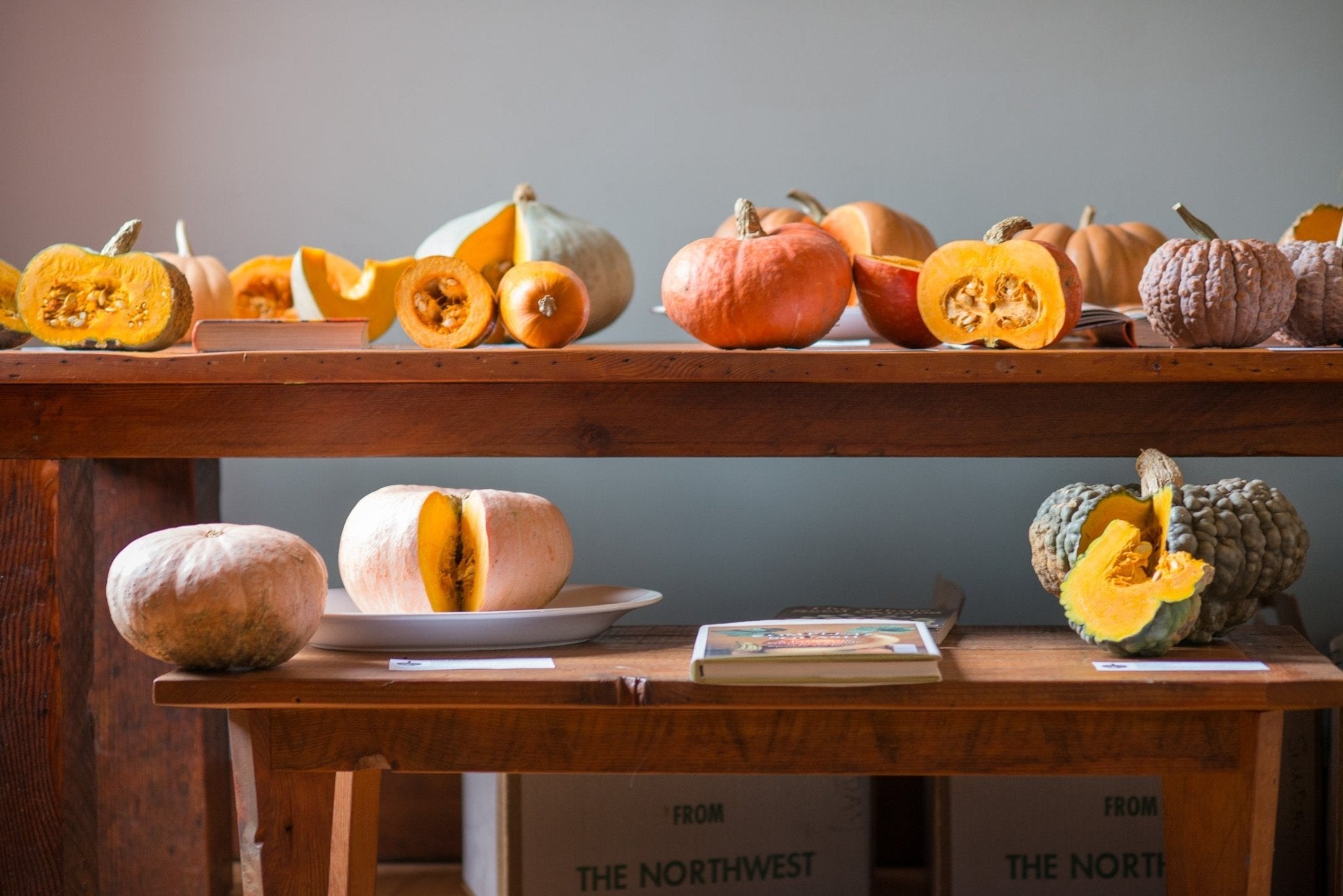
Organic Farming and the Development of New Squash Varieties
'Tis the season for squash cooked many ways: as soup, hollowed out and stuffed with any number of fillings, slathered in curry sauce, and, of course, baked into Thanksgiving pumpkin pie. To many consumers, winter squash comes in three flavors: pumpkin, acorn, and butternut. While these are all perfectly respectable choices, a quick glance inside any seed catalog proves they are far from the only options.
n
Tis the season for squash cooked many ways: as soup, hollowed out and stuffed with any number of fillings, slathered in curry sauce, and, of course, baked into Thanksgiving pumpkin pie. To many consumers, winter squash comes in three flavors: pumpkin, acorn, and butternut. While these are all perfectly respectable choices, a quick glance inside any seed catalog proves they are far from the only options.
Although most small-scale organic farmers grow and sell the “top three” winter squash types, they will rarely cite one of them as a personal favorite. If you ask what they eat, most will point to a table overtaken by giant, bulbous, often alien-looking gourds and rattle off names that sound mysterious, maybe even poetic to our butternut-squash-oriented ears: Marina di Chioggia, Musquee de Provence, Sweet Meat, Long Island Cheese, Kabocha.
An exciting world of flavors and culinary possibilities lies beneath their sometimes warty skin. However, while these varieties may be farmer favorites, farmers have a hard time selling them to consumers who don’t feel confident they can even cut one in half. Oregon State University (OSU) researcher Lane Selman observed this conundrum at the farmers market. While consumers would happily buy weekly acorn or butternut squash, they seemed too intimidated by the heftier - but better tasting and longer storing - varieties sitting alongside them.
How New Squash Varieties are Developed
As the director of OSU’s Culinary Breeding Network, Selman is particularly attentive to this sort of dilemma. Working with OSU plant breeders who use traditional selection methods to develop new vegetable varieties for organic and small-scale farming systems (read: no genetic modification), Selman connects these breeders with local farmers and chefs with the end goal of improving vegetable quality and consumer appeal. This three-pronged approach creates a space for dialog in which the farmers learn more about what their chef-customers want, and allows breeders the chance to listen to the challenges farmers face when growing and storing these crops, as well as hear from the chefs about what flavors, textures, and other cooking qualities they want from a particular type of vegetable. Alexandra Stone, an OSU Vegetable Specialist, teamed up with Selman to devise a research project focused on finding better-storing, delicious winter squash varieties that were small enough in size to appeal to the average consumer. In a smaller package, they hoped, consumers would be more likely to try something new. If the squash could store longer and be lighter and easier to move, farmers could expand their late winter offerings to farmers market and wholesale customers. To kick things off, they held a squash tasting party in November 2014, attended by farmers and chefs who ate their way through raw and prepared samples, leaving behind valuable notes on the varieties they liked best. Stone then moved on to researching the field performance and storage life of various lesser-known varieties that seemed to have good potential for fitting the niche they were going for. The resulting report from Stone’s 2015 field trials of smaller squash varieties gave regional farmers valuable information about which varieties perform well in their climate, taste good, and last in storage. While Stone’s research is specific to farmers in the Pacific Northwest, the quest she and Selman are on – dialing in a particular vegetable to better meet the needs and desires of all levels of the supply chain - is translatable anywhere. And dialog has been the most important takeaway. As Stone’s Facebook group, Squash Party, proves, sometimes the tool a farmer needs most isn’t a tractor or a trowel, but useful research and a place to talk about it. The Facebook group is an extension of Selman and Stone’s 2014 tasting party - a place for growers and eaters to connect and share their field results and tasting notes, and pose questions to the researchers themselves.Organic Farming Continually Innovates
Just like cooking, farming isn’t a static practice. To maintain a competitive edge, farmers must continually improve their technique, which isn’t much different than trying out new recipes. Organic farming, especially, relies on the tradition of working with old vegetable varieties to develop new ones that meet present-day needs for disease resistance, climate tolerance, and consumer appeal. So while your family’s pumpkin pie recipe might never change, in order to continue fitting into sustainable farm systems, the pumpkin itself will likely need to. And if you’re willing to try something new, Stone and Selman - and the team of chefs, farmers, and breeders they work with - have a few thoroughly tested suggestions.Would you like to be the first to hear about our new products and more? Sign up for our Nature’s Path Newsletter.







